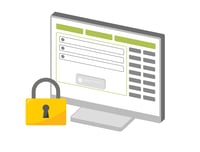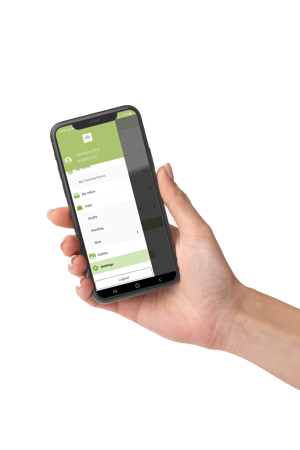Implementing a traceability system in a company provides valuable information, both current and historical, on a product or batch. This provides advantages such as knowing the exact location of an item at all times or being able to recall a batch of a product that has been defective.
The digitisation of a traceability system is the only way to effectively control large volumes of goods, especially if they have a lot of movement.
What is a corporate traceability system?
A traceability system can be defined as the set of tools and procedures that allow a product to be exhaustively tracked from its manufacture until it reaches the end customer.
What types of traceability systems are there?
Basically, we can distinguish two types of traceability in a company:
Internal traceability:
This refers to the processes that are followed to control the movements of products while they are inside a company. This includes passing through assembly lines and other manufacturing spaces, changes of location during storage, etc.
External traceability:
This refers to the processes to which products or batches of items are subjected once they leave the company. For example, in shipments to customers' homes or in transport to points of sale, such as department stores or supermarkets.
5 advantages of using a traceability management system in your company
- It allows you to control the product in an individualised way, even if it belongs to the same batch or manufacturing date. This makes it easier to recall or revise a product, if necessary.
- Improves and adds efficiency to stock management, by having real-time access to incoming and outgoing product operations, stock status, possible supply problems, etc.
- Greater control of losses and theft of articles, by being able to know the real-time location of each one of them. This increases the options for recovering them in the event of a loss.
- Allows early identification of supply problems of raw materials or materials, as well as other problems that could jeopardise the operation of the supply chain.
- Minimise the negative impact of stock incidents, supply problems, forced product recalls, etc.
Requirements to comply with a traceability system
When implementing a traceability management system in your company, you must ensure that it meets the following requirements:
To have an information system that allows the exchange of information with other companies:
It is important that the traceability of your company includes a system that allows a fluid flow of information between the different parties involved. For this, it is necessary to use a computer application that allows access to databases and other central systems of the company. It is also necessary to establish a system for automatically sending incident alerts via chat messages or e-mails.
 Encrypt the processed information:
Encrypt the processed information:
Another basic requirement is that the traceability system must be able to encode the processed information in digital formats. If this is not the case, it is impossible in practice to keep track of products, batches of articles, shipments, receipts, etc. There are different systems such as the Electronic Product Code (EPC) and other less expensive systems for smaller companies or businesses.
Establish a system for recording and organising information and documentation:
During traceability processes, a large amount of information and documentation is generated. This needs to be managed in an appropriate and practical way. This is in order to gain efficiency and improve the overall quality of the system.
The traceability system itself must contain specific methods to record the information in an automatic and standardised way. Another important issue is that it filters out the really important data and discards superfluous or non-value-adding data. This organisation should cover both digital information, which should be the majority, together with some data that is occasionally collected manually.
Facilitating collaboration between the different actors in the supply chain
Another important point is that the traceability system should have a function that integrates the work of the different professionals. These professionals in one way or another, collaborate in the storage and transport circuit of the product, from the manufacturing plant until it reaches the consumer. It is essential that the data collected is integrated and combined, even if it has been collected by different professionals and in different ways.
Having the necessary tools for proper data collection
Probably, nowadays, the most necessary and valued requirement of a traceability management system is that it incorporates IT tools. These tools allow data to be collected conveniently and efficiently, using mobile devices and in the field.
How does Kizeo Forms help us with the traceability system?
 Kizeo Forms, is the market-leading application in the generation of digital forms and automatic reports. It can be of great help in implementing a traceability system, especially in the following tasks:
Kizeo Forms, is the market-leading application in the generation of digital forms and automatic reports. It can be of great help in implementing a traceability system, especially in the following tasks:
Data collection or registration. You can collect data with your mobile phone or tablet in the field: in the factory itself, in the warehouse, during transport, etc. For this purpose, you can use fields such as geolocation, barcode and QR code reader, automatic calculation and more.
Optimal product or batch traceability. With Kizeo Forms you can create and print unique barcodes or QR codes, which can be printed directly from the app.
Creation of a database with QR codes, which can be read by the mobile application at every stage of the process, ensuring effective traceability.
Automation of forms and reports. The formats required for data capture and administration are defined in advance. It can be modified and customised according to the needs of each moment. In this way, you can work from the mobile application with checklists, material requests, reports and more.
Automatic extraction and transfer of data. Every time there is a change in a product, such as the entry and exit of the warehouse, the system automatically registers it and can transfer the data to other software in the company. In other words, you can centralise and access historical data whenever you need it. You can also keep your data up to date to facilitate your analysis.
